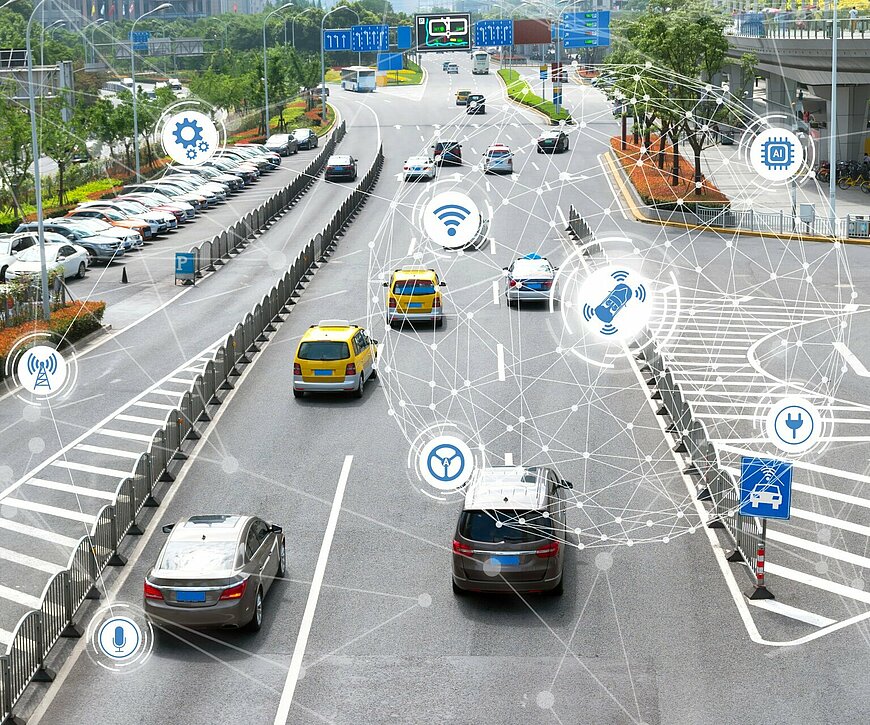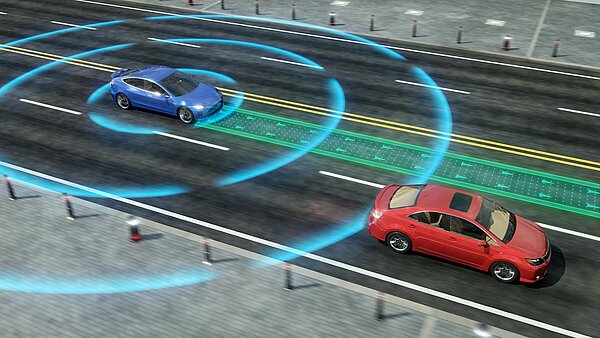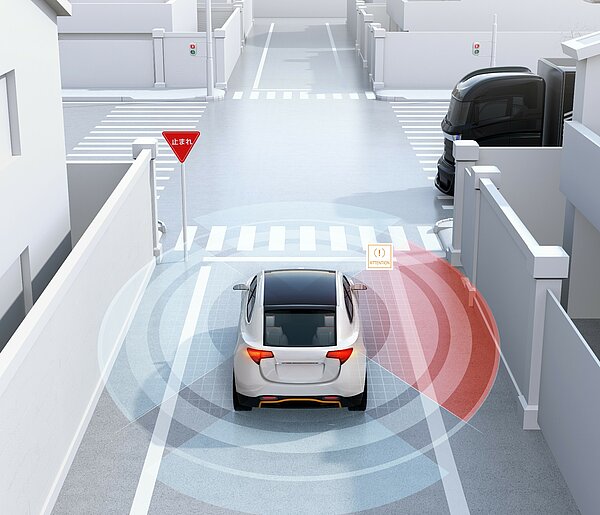Chips from NXP: putting smarter, safer and greener vehicles on the road

Trucks that automatically follow each other in a convoy to save fuel. Or advanced driver-assistance systems that support drivers in dangerous traffic situations. At NXP Semiconductors, based in Brainport Eindhoven, they are working on smarter, greener and safer forms of mobility
Over the past three years, for example, NXP has been working within the Ensemble-project with all seven European truck brands and various suppliers and knowledge institutes on the development of a platooning system. This allows trucks - of any brand - to drive behind each other safely and automatically.
"NXP makes the chips, another party then puts software on them, and yet another party is building a device around them. So, we are at the intersection between the application and the technology."
Gerardo Daalderop

Platooning
The driver receives a message that the truck in front of them is also able to platoon and then makes a pairing request. This is how a platoon, a convoy of trucks, is formed. The linked trucks exchange data from radar, camera and other sensors twenty times per second. "The trucks react to each other extremely quickly and can therefore drive close together at a constant speed. This avoids any harmonic effects and saves five to a maximum of fifteen percent on fuel," says Joost van Doorn, System and Software Architect at NXP. If traffic has to pass coming up to an approach or exit, the system ensures that the trucks increase the distance between them and allow the traffic to pass through.
NXP is responsible for the chips and software for the communications technology that interconnects the trucks. "All the data and communication must converge in a computer and then be used to make decisions or inform the driver," explains Gerardo Daalderop, Technical Director of NXP. "NXP makes the chips, another party then puts software on them, and yet another party is building a device around them. So, we are at the intersection between the application and the technology."
Vehicle-to-vehicle communication
Vehicle-to-vehicle communication is the technology and platooning can be seen as the application that uses this communication technology to link trucks. "That same technology can also be used for other purposes. Imagine vehicles communicating with traffic lights. Or when a transmitter indicates that there are roadworks ahead, so that vehicles can anticipate that in advance," says Brian de Bart, Team Lead System Innovations at NXP.
Safe and green chips
Daalderop goes on to explain that NXP contributes to safer traffic in two ways: "First of all, we make sure that the systems are safe and resistant to electronic malfunctions. In addition, the electronics must last a long time and be able to withstand wide-ranging temperature fluctuations and vibrations. If a part does break down, the rest of the system must be capable of detecting the problem and bringing the vehicle to a safe standstill. Secondly, when there is communication between two or more computers, it also has to guarantee that there is security in place in the event of hacking attacks. We also provide that security technology."
Within the framework of becoming greener, NXP is also focusing on the development of battery systems for electric cars. De Bart: "We supply chips for the electronics that control the battery cells. These electronics regulate the charging process, for instance: it has to happen quickly but safely so that the battery does not overheat. These electronics also extend the range because the battery is being used more efficiently. With this in mind, we started looking for partners in the region. That's how we ended up at the Battery Competence Center," says De Bart. "The great thing about the Brainport region is that companies that are all working on a different part of the same chain are located close to each other. That’s how we learn from each other and see where problems and opportunities lie."
"The great thing about the Brainport region is that companies that are all working on a different part of the same chain are located close to each other. That’s how we learn from each other and see where problems and opportunities lie."
Brian de Bart
Advanced driver-assistance systems
According to Daalderop, there is plenty of talk about highly automated driving in the context of smart mobility. "That's an enormous challenge, basically, you then skip a step. On the way to that mark on the horizon of autonomous driving, we are developing all kinds of insights and techniques that we can apply to smarter, active safety-enhancing systems in the car. Accidents can be prevented, or at least have less of an impact that way."

Smarter advanced driver-assistance systems (ADAS) are one example. ADAS are clusters of electronic technologies that assist drivers while driving. As such, they increase safety on the road and in the car. Daalderop: "Better, more anticipatory and comfortable forms of assistance for drivers will be the main spin-off from all the research into autonomous driving."
Nowadays, cars incorporate safety features that use several sensors. Take, for example, an automatic braking system based on a radar sensor. "In the future, cars will be equipped with a network of sensors that interact with each other as well as with the networks of other vehicles. This enables potential accidents to be avoided," says Daalderop. "Combining sensors and ultimately building a system around them is definitely a trend," De Bart acknowledges. NXP is therefore fully committed to Vision Zero: Zero traffic deaths.
AI and Vision Zero
De Bart finds it difficult to predict what NXP will be doing in five years, but he is at least confident that Artificial Intelligence is set to play an increasingly important role. "In radar development and the way our sensors interpret images, AI is becoming more and more important. That also applies to Green Mobility, where AI can help, for example, with information about the driver, the route, the traffic and weather conditions, to use the battery as efficiently as possible."
By now, Daalderop knows that it is hard to predict which innovation will break through and when. "In 2012, almost everyone thought autonomous driving would break through before 2020. That didn't happen. But we did know that there would be a huge number of spin-offs, even if the breakthrough occurred much later." If he has to name one thing, he expects that with the help of AI Safe, Accident-Free Driving (Vision Zero) will become even more important in the automotive industry.